“One of the best documented and preserved historic houses in the Carolinas.”
258 East White Street
City Directories and History: The historic White Home in downtown Rock Hill, South Carolina is one of the region’s most important historic facilities and homes.
George P. White and his wife Anne Hutchison White in circa 1837, the home shows a continuous period of construction and additions for more than thirty years. The home’s rich history parallel that of the town of Rock Hill which began growing in 1852 with the completion of the Charlotte to Augusta railroad. The whistle-stop at the time was called numerous names but the one that stuck was Rock Hill for the large flint rock found at the end of what became main street.
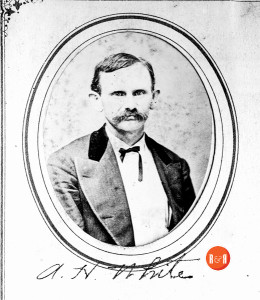
Andrew Hutchison White of Rock Hill was born and raised here at the White Home. HRH Collection
Historic Rock Hill, a non-profit preservation society purchased the home for restoration. During the process the old Victorian elements of the house were removed and the original Gothic Revival front porches were reconstructed as they had appeared in 1859. The White family not only let nearly 1,900 documents but also thousands of images highly valuable to accurately interpret the family and Rock Hill’s development.
Please see Historic Rock Hill’s website for additional data on tour and memberships.
The White House, formerly a plantation home, now stands within the city limits of Rock Hill. It is considered to be the oldest house in Rock Hill, incorporated in 1870. Occupied by five successive
generations of the White family, the house is a reminder of the Scotch-Irish who settled the upcountry. Built between 1832-1842, the large frame dwelling with two-story piazzas, small columns, and tall end chimneys was designed in the typical upcountry plantation style. The house reflects the prosperity that came to upcountry settlers who were able to replace their original pioneer log cabins with plantation homes. While the plantation home was being built the White’s lived in the first home at the site, the log cabin which still stands at the rear of the White House. The frame building was constructed with hand-hewn oak sills, heart of pine weatherboarding, and the wide board floors typical of antebellum houses. Some Victorian scrollwork was added to the two front porches in the 1890s. It was modernized in the 1920s with electricity and central heating. Its builders were early Scotch-Irish Presbyterian settler George Pendleton Stuart White and his wife Ann Hutchinson White. Listed in the National Register December 2, 1969. [Courtesy of the S.C. Dept. of Archives and History]
—————————–
ADDITIONAL DATA CONTRIBUTED TO R&R – BY PAUL M. GETTYS
![White - Presto Collection Albums [JWP] C 006 - Copy](https://www.rootsandrecall.com/york-county-sc/files/2013/05/White-Presto-Collection-Albums-JWP-C-006-Copy-300x228.jpg)
Images of White family members riding on the streets of Rock Hill and at the White Home itself. Courtesy of the White – Presto Collection, WU Pettus Archives
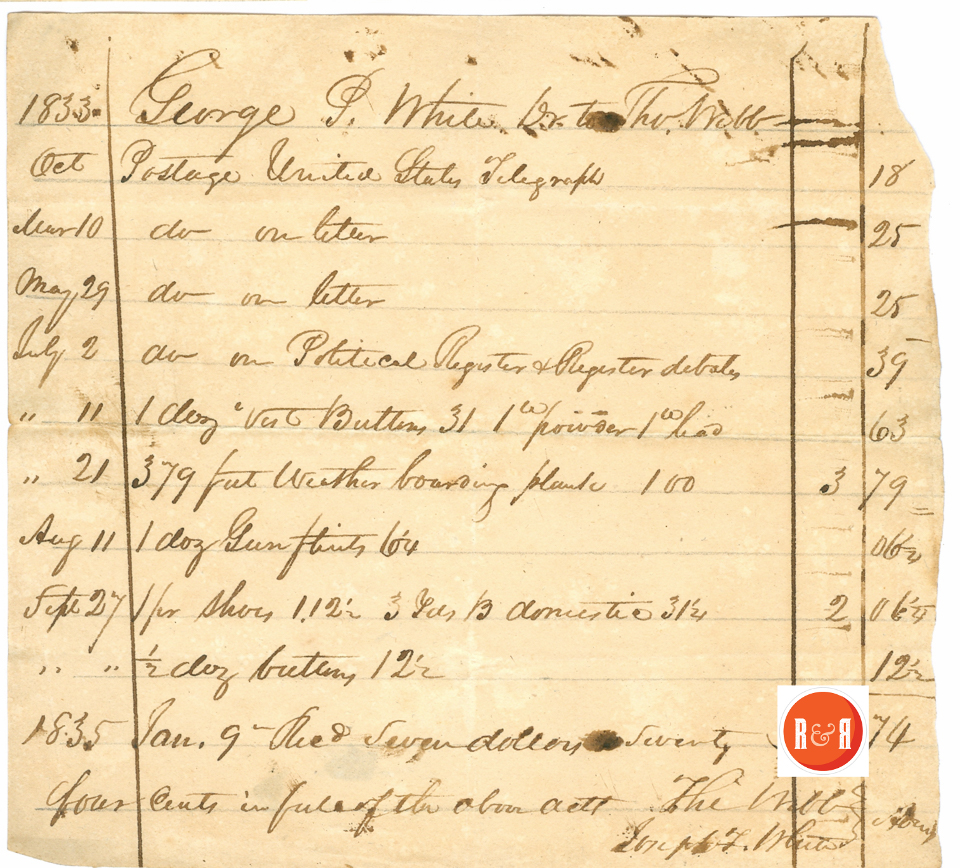
In 1833 George P. White was purchasing buttons and other materials from the Webb’s Fort Mill, S.C. store. These materials were being used in his business as a tailor. Courtesy of the White Family Collection – 2008
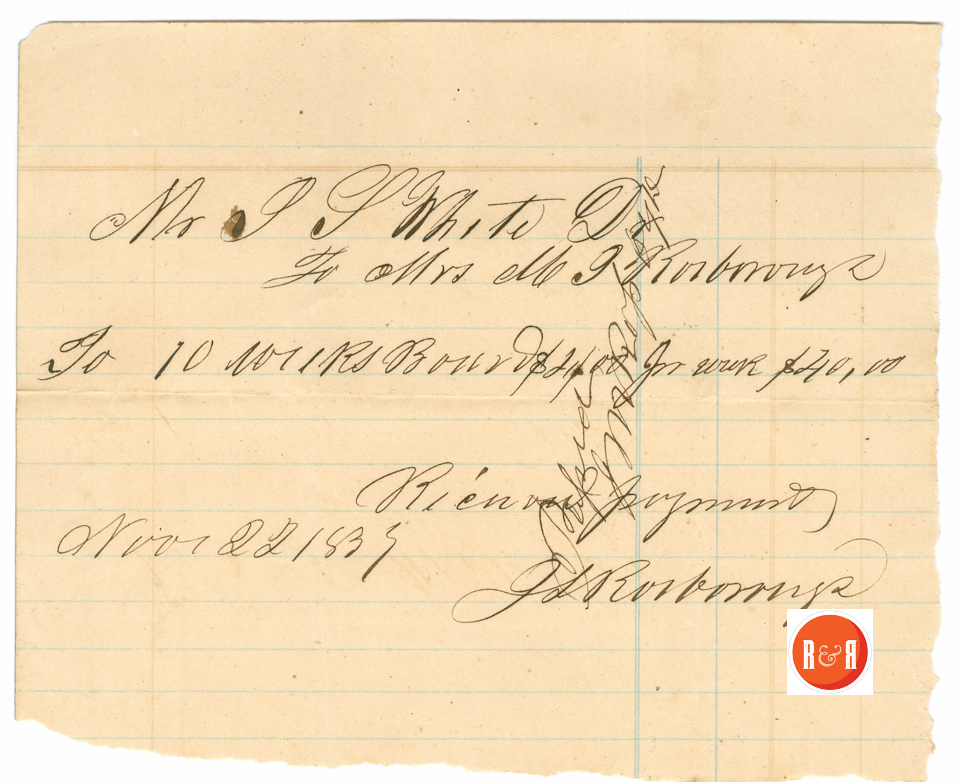
Mrs. M.G. Roseborough pays weekly rate of $4.00 for board in the fall of 1839@ the WH. Courtesy of the White Collection/HRH 2008
Ann’s father, David Hutchison, was a successful planter and magistrate. She had a number of brothers and sisters who would remain close throughout their lives. George and Ann were married on December 14, 1837. They purchased the lease rights to 153 acres from James Black for $500 in silver. This land was located a few miles west of the Hutchison farm along the Upper Landsford Road. Because the land was within the Catawba Indian Nation, it was leased from the Catawba Indian tribe, and the Whites did not have full title until after the 1840 treaty which ended the leasing system. Their farm was located within the area known locally as “Black Jacks.” This soil was considered poor for farming cotton and other crops because of its composition. Not until after the Civil War that the discovery was made that adding a little potash would transform the poor Black Jacks into very productive farmland.![White - Presto Collection Albums [JWP] C 001](https://www.rootsandrecall.com/york-county-sc/files/2015/05/White-Presto-Collection-Albums-JWP-C-001-300x233.jpg)
![White - Presto Collection Albums [JWP] C 005](https://www.rootsandrecall.com/york-county-sc/files/2013/05/White-Presto-Collection-Albums-JWP-C-005-300x233.jpg) It is believed that George and Ann moved into an existing single room house on the farm they bought. There was a log cabin to the rear, and it is thought they used it as a kitchen. Extensive study during the recent restoration of the White Home have helped us to understand the gradual process by which a simple one-room home was gradually transformed into the impressive house we see today. Within a year of their marriage, George and Ann were blessed with a daughter, Mary Elizabeth. They began building a new house just to the east of the original house. It was a “hall and parlor” style structure, a very typical style in the area. It featured a two-story facade, double front doors, a massive chimney on the east end, and an interior stair case to the second floor. Brightly painted tiger maple doors and yellow colored door panels welcomed guests to the new home. The exterior was painted tan. The young family continued to grow. A son, David White, was born in 1840, but unfortunately he lived less than a year. In 1841, James Spratt White was born, followed by Andrew Hutchison White in 1843 and Adeline, the youngest, born in 1847. Following the custom of the day, all the children were named for close family members. The young family prospered. George continued his tailoring business and worked as a small-scale farmer. He began to acquire African-American slaves to help work the land. As the children grew, the Whites made every effort to provide them with a strong education. The late 1840s brought a development which would have a great impact on the family and the local community of small farmers. A new railroad was proposed to connect Augusta, Columbia, Charlotte, and points beyond. Initial plans called for the rail line to pass through nearby Ebenezer, a village which included the White’s church (Ebenezer Presbyterian), an academy, and several homes. Citizens of Ebenezer, fearful that the new technology might frighten their cattle and threaten their children, protested. George White, seeing the value of the new technology, made an offer to provide a right-of-way through his farm. This was accepted, and the route of the rail line shifted eastward. George’s contract with the railroad, a copy of which still exists, called for him to provide grading of the rail line route through his farm. This was one of the highest points along the line, and the removal of a flint rock hill in the area would later provide the name for the new community of Rock Hill. Unfortunately, during his work supervising the grading, George caught pneumonia and died in 1849, leaving Ann with a farm to run and four small children.
It is believed that George and Ann moved into an existing single room house on the farm they bought. There was a log cabin to the rear, and it is thought they used it as a kitchen. Extensive study during the recent restoration of the White Home have helped us to understand the gradual process by which a simple one-room home was gradually transformed into the impressive house we see today. Within a year of their marriage, George and Ann were blessed with a daughter, Mary Elizabeth. They began building a new house just to the east of the original house. It was a “hall and parlor” style structure, a very typical style in the area. It featured a two-story facade, double front doors, a massive chimney on the east end, and an interior stair case to the second floor. Brightly painted tiger maple doors and yellow colored door panels welcomed guests to the new home. The exterior was painted tan. The young family continued to grow. A son, David White, was born in 1840, but unfortunately he lived less than a year. In 1841, James Spratt White was born, followed by Andrew Hutchison White in 1843 and Adeline, the youngest, born in 1847. Following the custom of the day, all the children were named for close family members. The young family prospered. George continued his tailoring business and worked as a small-scale farmer. He began to acquire African-American slaves to help work the land. As the children grew, the Whites made every effort to provide them with a strong education. The late 1840s brought a development which would have a great impact on the family and the local community of small farmers. A new railroad was proposed to connect Augusta, Columbia, Charlotte, and points beyond. Initial plans called for the rail line to pass through nearby Ebenezer, a village which included the White’s church (Ebenezer Presbyterian), an academy, and several homes. Citizens of Ebenezer, fearful that the new technology might frighten their cattle and threaten their children, protested. George White, seeing the value of the new technology, made an offer to provide a right-of-way through his farm. This was accepted, and the route of the rail line shifted eastward. George’s contract with the railroad, a copy of which still exists, called for him to provide grading of the rail line route through his farm. This was one of the highest points along the line, and the removal of a flint rock hill in the area would later provide the name for the new community of Rock Hill. Unfortunately, during his work supervising the grading, George caught pneumonia and died in 1849, leaving Ann with a farm to run and four small children.
RAILROADS COME TO YORK COUNTY – Several additional facts about the rail line from Columbia to Rock Hill may be of interest to the reader. First, the men from York District who attended the convention concerning the building of a railroad from Charlotte to Columbia were Colonel W. C. Beatty, William A. Latta, John Miller Ross, Robert Gadsden McCaw, William Moore, W. Giles, J. Beatty Smith, and Joel W. Rawlinson. This initial meeting of interested parties was held at Winnsboro on May 24 and 25, 1847.
Subscribers for stock in the Charlotte and South Carolina Railroad Company on September 9 and 10, 1847, were these: Colonel W. C. Beatty, John Miller Ross, Colonel William Wright, John S. Moore, W. I. Clawson, William A. Latta, George W. Williams, Colonel Edward Avery, Harvey Hugh Drennan, Rev. Archibald Whyte, Thomas D. Spratt, James D. Spratt, A. M. White, George P. White, William E. White, and Captain John Massey.
(Along the Landsford Road, by Wm. B. White, Jr. Vol., I – 2008)
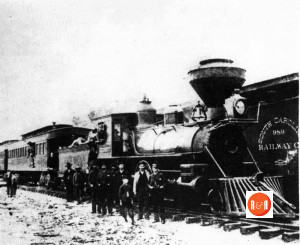
It was the coming of the train through what became Rock Hill that attracted them to this rural location. Images courtesy of the AFLLC Collection
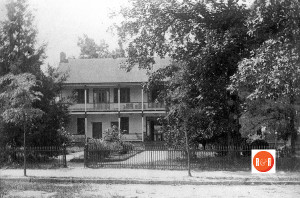
Early image of the White Home clearly showing the double doors (left side of main entrance), of the original two story home. Image taken in ca. 1910…
This crisis in Ann White’s life revealed a woman with an uncommon resolve and a keen sense for business. She received some help from her brother, Hiram Hutchison, who had become a very successful banker and merchant and who would eventually become one of the leading figures on the New York Stock Exchange. However, for several years after George’s death, Ann struggled to make ends meet and support her family. She continued the railroad construction project, took in boarders, and farmed on a small scale. One of her boarders was Frederick Nims, the chief engineer for the railroad. Nims not only paid rent but also hired one of Ann’s slaves, Charles to work with him, paying $35.00 a month to Ann and providing Charles’ clothing and shoes. Because of the probate laws, Ann was required to provide yearly reports and produce receipts for expenses and income for a number of years that George’s estate was in probate. These records have been preserved by the family, and provide us with an unusually detailed picture of the White family’s life.
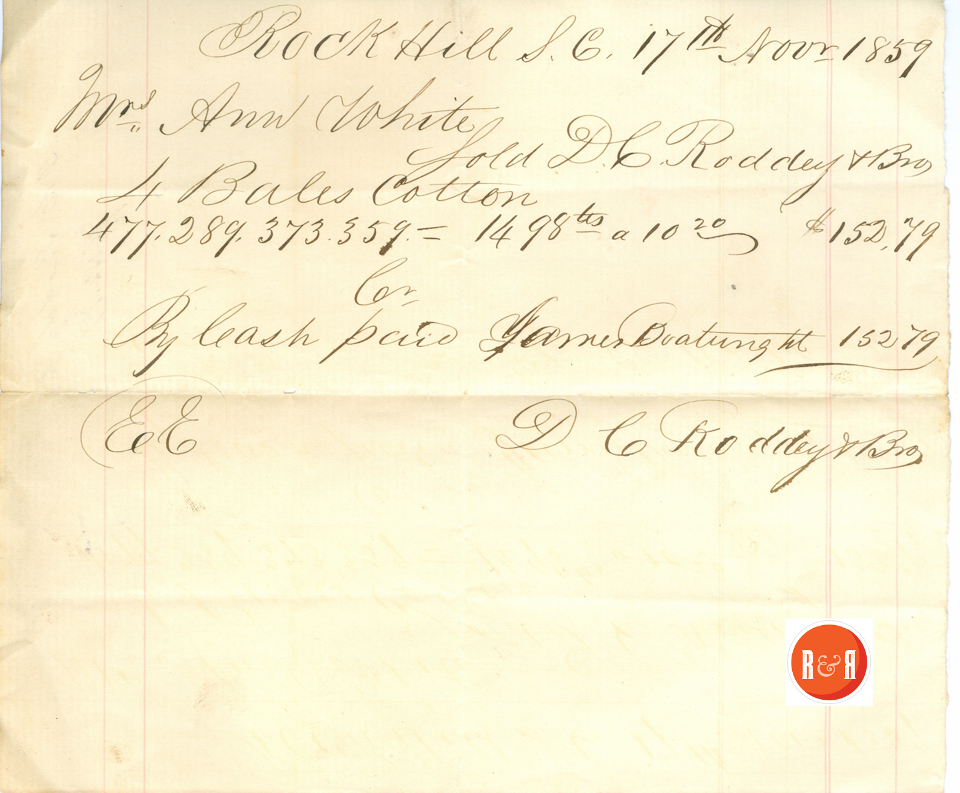
In 1859 Mrs. Ann H. White sold her four bales of cotton to D.C. Roddey and Brothers of Rock Hill. Her overseer, Mr. James Boatwright collected the funds. Courtesy of the White Family Collection – 2008
With the completion of the railroad, a depot was established at the edge of Ann White’s land. Called by some Ebenezer Depot, the name soon became Rock Hill, and a new community was born. Her neighbor, Alexander T. Black, had a plat made by John Roddey, local surveyor, and created a Main Street with lots for sale. Ann was among the first to realize that her land was strategically located and could be sold for income. In 1852, as the new village was evolving, Ann sold property to William Broach, the first merchant in the new community. She also increased her holdings by buying about 400 acres from the Miller family. Ann also showed an interest in the cultural and religious development of Rock Hill. She provided land on her farm for the first school in Rock Hill in 1854, and her children attended classes there. She was also instrumental in beginning a Presbyterian church in the new community, eventually leading to the establishment of First Presbyterian Church a block away from her home.
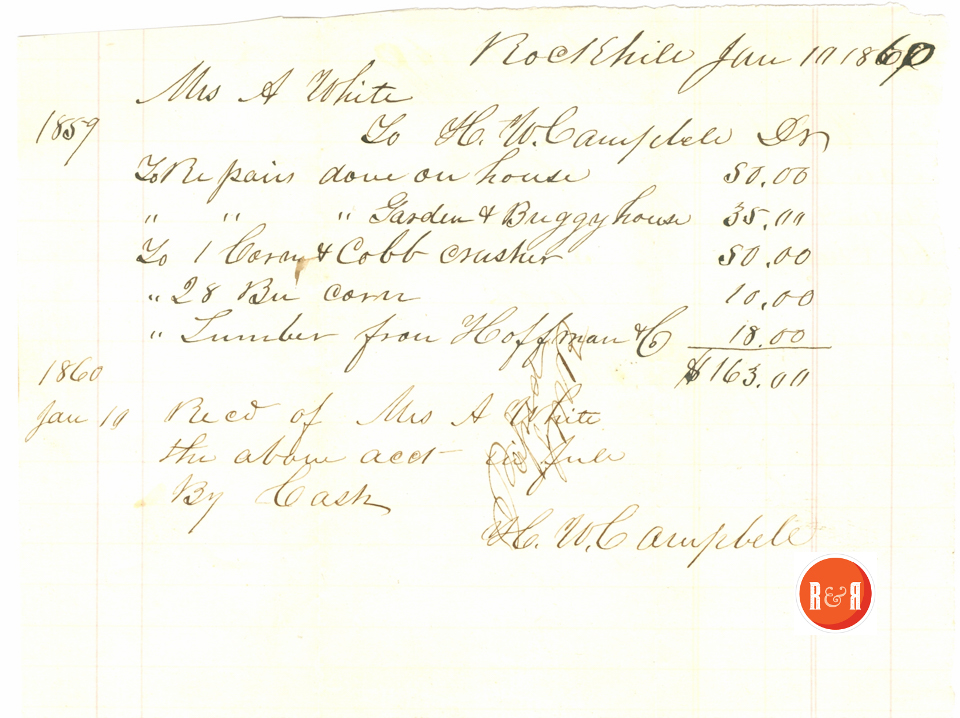
Bill for repairs by H.W. Campbell, Mrs. Whites’ nephew on the buggy house and garden house. Courtesy of the White Family Collection – 2008
In 1856, Ann’s brother Hiram Hutchison died in New York City (see an extensive history of his dealings under the MORE INFORMATION link by author Lacy Ford), and she would eventually receive a large fortune from his estate. However, disputes over his estate delayed the final settlement until 1867. By 1859, Ann began using some of her initial income from Hiram’s estate to expand the White Home. She created the double piazza on the facade similar to what we see today, and made extensive interior upgrades. She built a brick smoke house and brick cooling well-house. One of the most interesting rooms in the house is the “Prophets’ Chamber.” It was customary for homeowners to offer lodging to travelers. Ann dedicated a room for traveling ministers, and provided food and comfortable lodging for any minister who was passing through Rock Hill. Mostly Presbyterian, these ministers signed a guest book which still exists.
The Civil War period was a dark time for the family. Both the Whites and the Hutchisons had been strong supporters of America’s fight for independence. Ann’s grandfather, Alexander, was killed at the battle of Hanging Rock during the American Revolution. Patriots in George’s family included his cousin, Andrew Jackson. After the Revolution, both George and Ann’s fathers worked as agents to the Catawba Indian Nation. Despite their loyalty, the family realized that sectional differences were dangerous omens of division. Ann’s father David, in one of his many poems, had predicted that the new nation would be short-lived. As early as 1832, anti-tariff sentiment led to led to a protest meeting in Ebenezer. Women were urged to wear homespun dresses rather than pay tariffs. Ann’s sister, Polly, gathered scraps from the clothing to be fashioned into a quilt. The “Nullification Quilt” was passed down in the family. When war became inevitable, the White and Hutchison families were strong Confederates.
Ann’s brother, Adolphus Eugene Hutchison, organized the first militia bound for the defense of Charleston. Ann’s oldest son, James, cut short his senior year at the South Carolina College (now USC) to join a former teacher John M. White. Throughout the war, his regiment would encounter some of the most noted battles. Youngest son Andrew, a teenager, had begun attending Charlotte Military Academy, created by D. H. Hill, in 1859. When war broke out, Hill, appointed by North Carolina’s Governor to organize the first state militia, recruited 150 of his students. Andrew was sent instead to the Arsenal Academy in Columbia. He eventually joined the Confederate Army and was enlisted to help defend Charleston.
At home, Ann worried about her sons and continued to make a living as best she could. During the early war years, the Upper Piedmont, including Rock Hill, served as a haven for war refugees fleeing coastal fighting. Several families stayed at the White Home. With money scarce, lodgers often paid with personal possessions. Ann White received gifts of platters, rice bowls, and furniture from these refugees. There is a story, which cannot be confirmed, that the wife of Confederate General Wade Hampton III stayed at the White Home. Her request for linen sheets was answered with a stern reprisal from Ann, who reminded her that all the linen had been sent for the war effort, and she would have to sleep on cotton sheets like everyone else. During the war, the Rock Hill depot became an important point for troop movements and supplies. Troop trains stopping at Rock Hill were met with food, water, and encouragement. The ladies of Rock Hill opened their homes to nurse wounded Confederates.
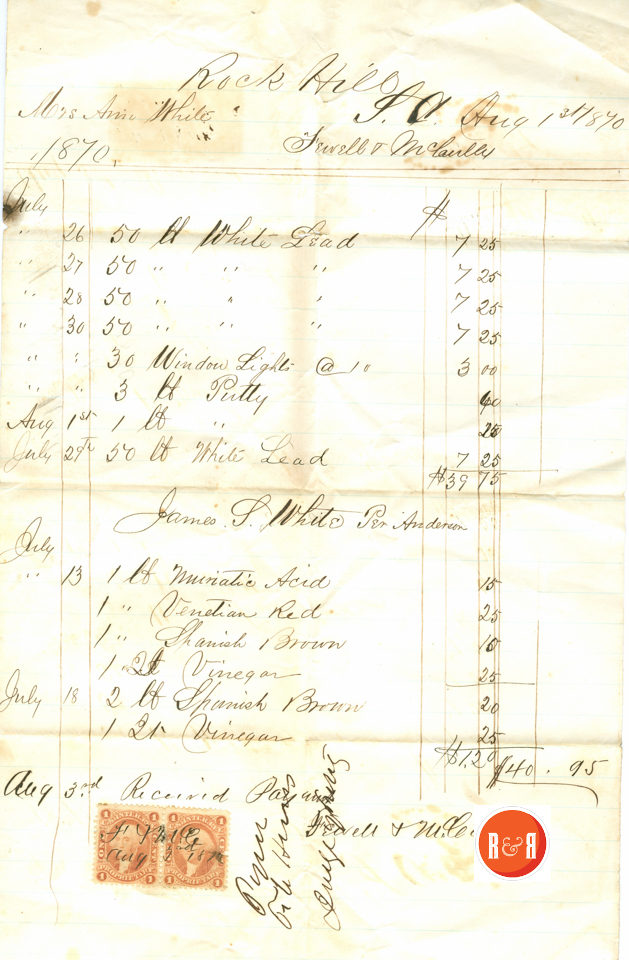
Bill for materials to complete the White Home Annex – Fewell and McCully – 1870 order by contractor Mr. Anderson.
As the was neared its end, the family worked to care for each other. In March 1865, James was encamped in Northern Virginia and was receiving regular “care packages” from Ann. He wrote and urged her to redirect her gifts to the numerous needy in South Carolina. Daughter Ada was sent to several female colleges during the war to keep her safe. James wrote to his brother Andrew urging him to protect the family and home from dangerous Confederate scavengers. James would lay down his rifle at a little known spot called Appomattox Court House and return home.
With the war over, Rock Hill began to recover. It grew rapidly, attracting settlers from surrounding counties, and became a regional trade center. Many had lost everything in the war, and even the town’s founder, Alexander Black, was penniless. Ann and her siblings renewed their efforts to settle Hiram Hutchison’s estate in order to restore some of their wealth. In 1867, Ann traveled to New York, where the estate was settled. She returned as one of the wealthiest people in York County. By 1869, she was building again. The one-story section of the home to the rear was added, and eventually Victorian scroll work adorned the porches. The invention of the jigsaw and easy shipment on the railroad led to the addition of Victorian touches on many older homes. The White Home became known locally as the “Gingerbread Palace.” James went to the University of Virginia and Columbia Seminary. He accepted a pastorate in Americus, Georgia and was married. Mary Elizabeth continued to live with her mother in the White Home. Addie married and later built a home next door to the White Home. Andrew married a young music teacher, Hattie Isabella Lindsay, who had come to Rock Hill from York. They also lived in the White Home and helped care for Ann, as she was beginning to experience declining health. In 1880, Ann Hutchison White, the “Mother of Rock Hill,” passed away.
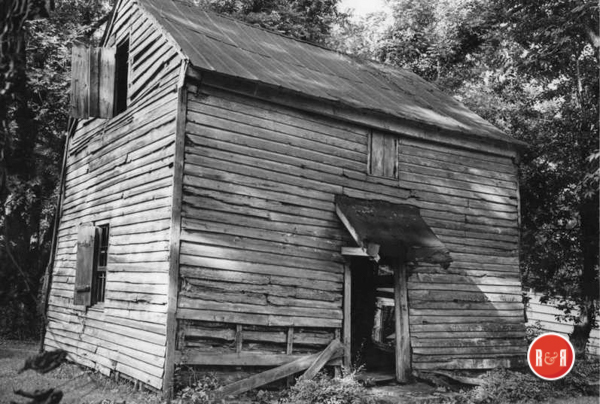
White House Kitchen prior to restoration. Courtesy of the Wm. B. White Collection
The same year, James began to experience health problems and moved home to Rock Hill, living in a home on White Street about a block away from the family home. He entered into the religious and cultural life of Rock Hill, helping to civilize what was a rough and tumble village. James began the first Sunday School, organized the first public school, began the library, helped to start Laurelwood Cemetery in 1872, and even supervised the installation of the first sidewalks. Brother Andrew and sister Mary were by his side in many of these efforts, serving on committees, donating land, and providing funds to help shape the community for the better. In 1891, James died from a drowning accident, and his wife died only a month later, leaving four young children. Mary Elizabeth, who had never married, helped to care for them. Andrew continued the family tradition of service, heading the state masonic Lodge and agricultural society and serving in the Constitutional Convention of 1895. During two terms as Intendant, the title was changed to mayor, and Rock Hill became one of the first cities to adopt the council form of government.
The Yorkville Enquirer reported on Jan. 25, 1888 – “A jury considering damages to the White Estate from the construction of the 3 C’s railroad awarded the family $2,600. as follows: Ms. Mary White, $1,000., A.H. White $1,000., and other family members $600.”
After the death of Mary and Andrew, Andrew’s son Hiram Hutchison White moved his family into the home. In the 1920s, he made a number of changes to the interior of the house. A surveyor by trade, H. H. White, along with his brother Beatty Jennings White, an attorney, sold much of the remaining farmland for residential development for the growing city. Hiram also had a strong interest in landscape design, and along with his cousins Joseph and David Bigger, introduced the azalea to the Upstate and created what is now Glencairn Gardens. Following a tornado in 1926 which created a great deal of damage in downtown Rock Hill and destroyed many trees at the White Home, H. H. White extensively replanted the grounds. The beautiful live oak trees were probably planted at this time. Two sons of H. H. White, William Crawford White and Andrew Lindsay White, lived in the home and cared for it.
- Image of the historic White Home log cabin, perhaps one of the oldest dwellings in Rock Hill, S.C.
- Details of the historic White Home ca. 2010
- Details of the historic White Home ca. 2010
- Details of the historic White Home ca. 2010
The Rock Hill Record of March 22, 1909 – “Matthew White, better know as Mack, died last week. He was born a slave and came to Rock Hill in 1867 at the age of six and was a lifelong servant of the White Family. He was Ms. Mary White’s servant. For forty years, Mack had lived in the modest cabin in Ms. Mary’s yard.”
The Herald contained an add on Dec. 17, 1919, “for auction of farm tools and implements from the Woodberry Farm, James S. White owner. (The add contained a list of detailed farm equipment for sale.)
In 2005, after five generations of the White family cared for this treasure, the local group Historic Rock Hill purchased the property and began a five-year restoration effort. The White Home represents a unique resource for the citizens of Rock Hill and eastern York County. It tells the story of a family which has served South Carolina through many generations. It also tells the story of the birth and development of Rock Hill.
Additional information related to Ann White of Rock Hill, SC: YC History #1, YC History #2, YC History #3
Click HOME to return to the numbered site tour of Rock Hill’s downtown. Also see added data and store receipts under the MORE INFORMATION link, found under the primary image. Enjoy viewing a special event at the White Home: GLIDDEN CAR TOUR OF SC
SCROLL DOWN THE PAGE FOR ADDITIONAL DATA AND IMAGES
Stay Connected
Explore history, houses, and stories across S.C. Your membership provides you with updates on regional topics, information on historic research, preservation, and monthly feature articles. But remember R&R wants to hear from you and assist in preserving your own family genealogy and memorabilia.
Visit the Southern Queries – Forum to receive assistance in answering questions, discuss genealogy, and enjoy exploring preservation topics with other members. Also listed are several history and genealogical researchers for hire.
User comments welcome — post at the bottom of this page.
Please enjoy this structure and all those listed in Roots and Recall. But remember each is private property. So view them from a distance or from a public area such as the sidewalk or public road.
Do you have information to share and preserve? Family, school, church, or other older photos and stories are welcome. Send them digitally through the “Share Your Story” link, so they too might be posted on Roots and Recall.
- Ca. 1850s
- Ca. 1860
- Ca. 1960
- Ca. 1910
- Ca. 1925 – 1926
- Ca. 1972
User comments always welcome - please post at the bottom of this page.
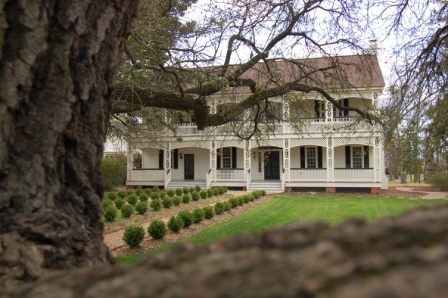
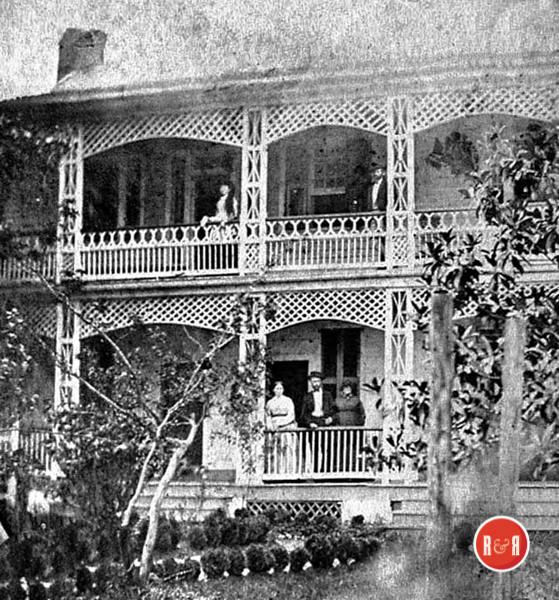
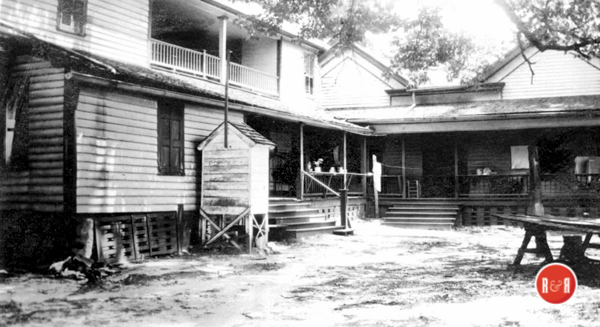
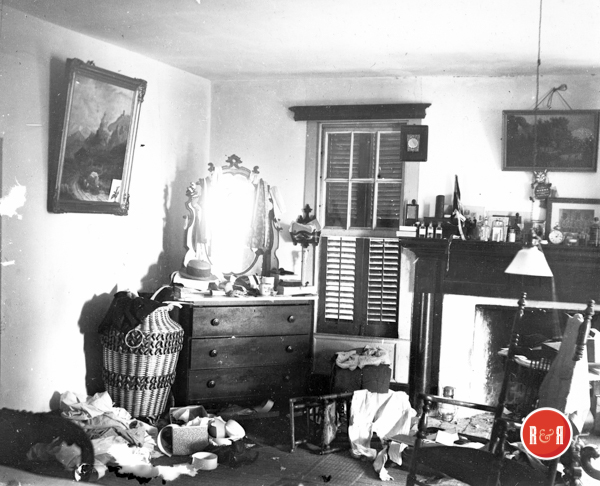
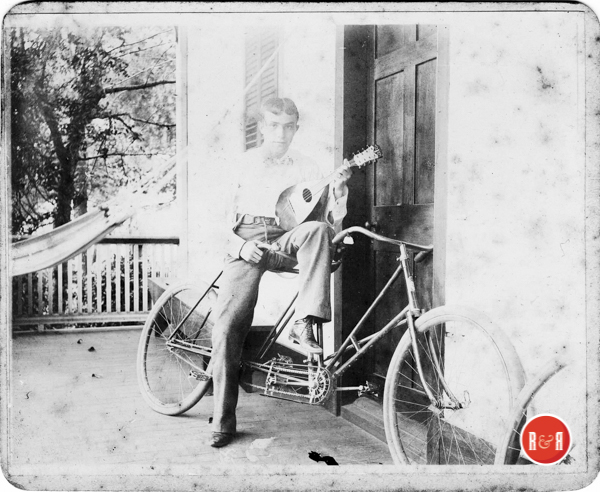
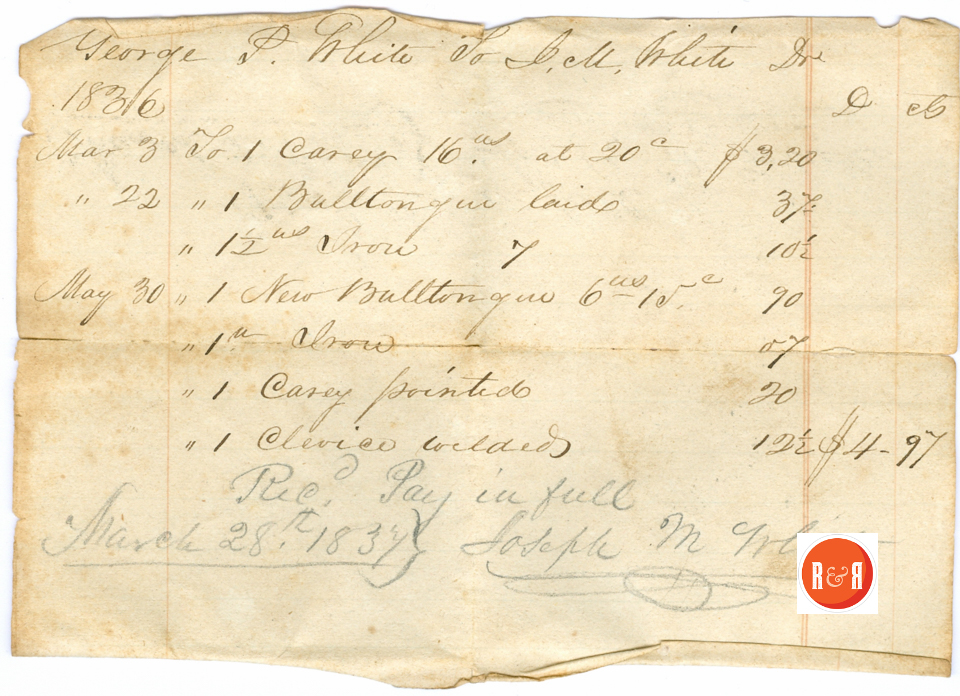

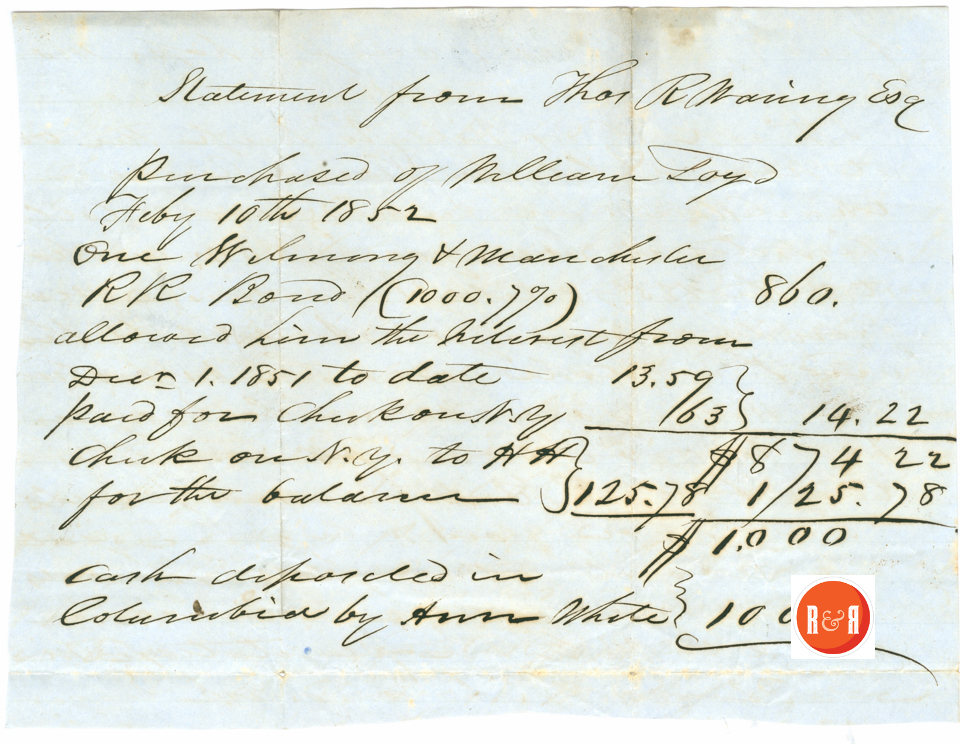
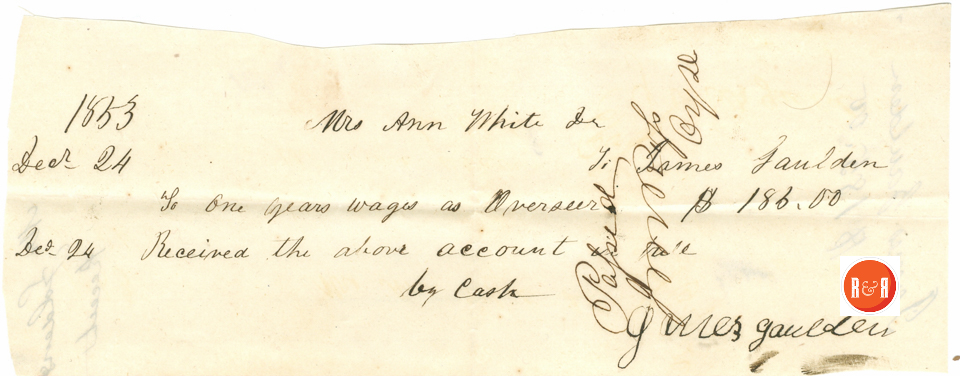
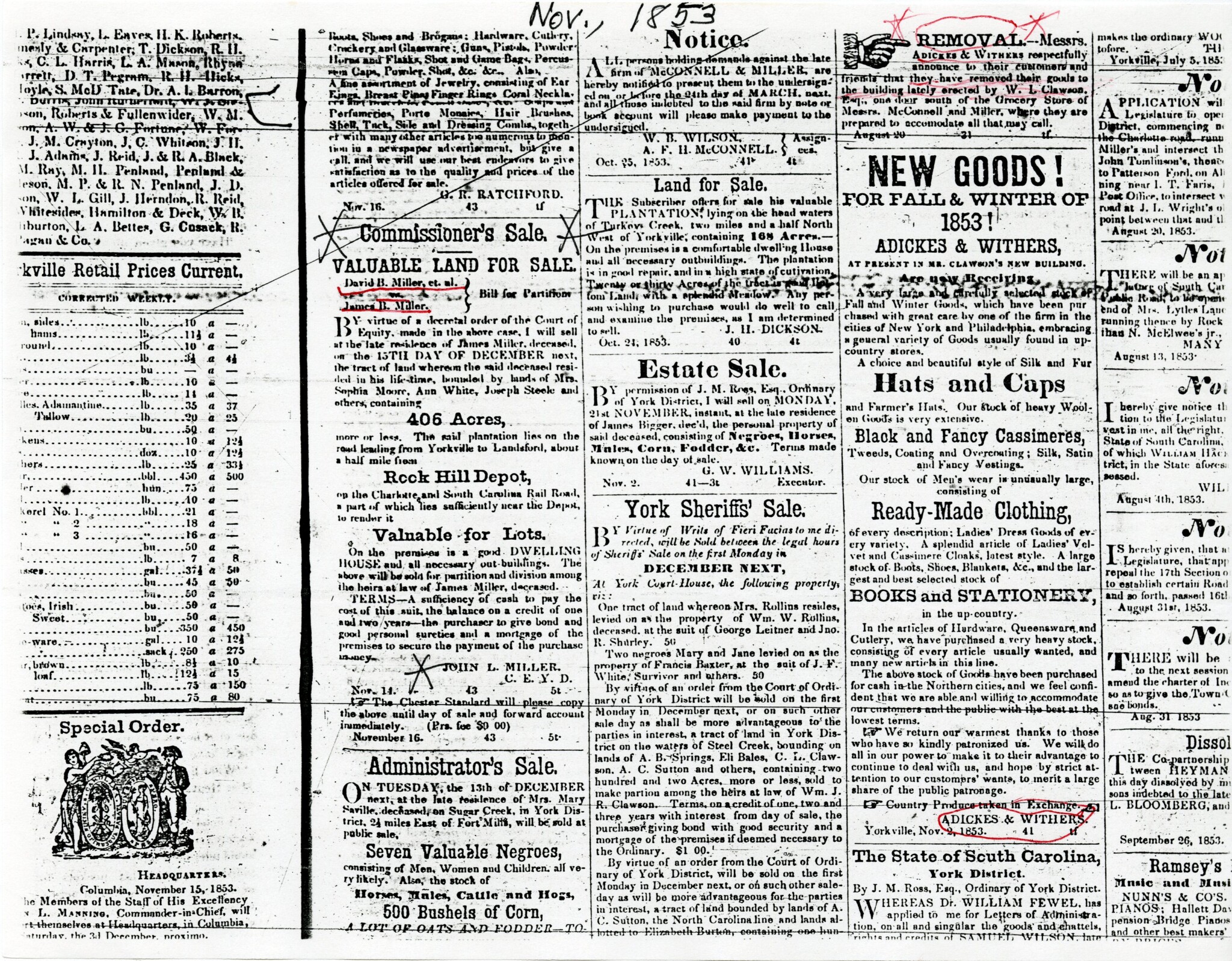
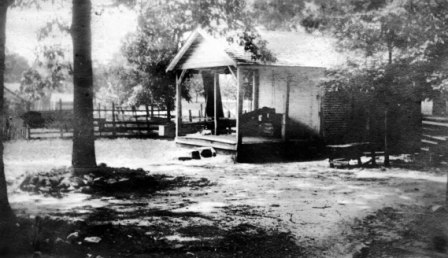
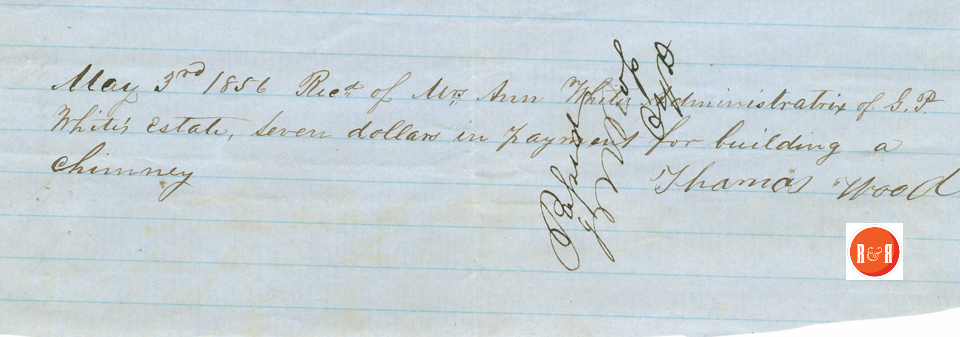
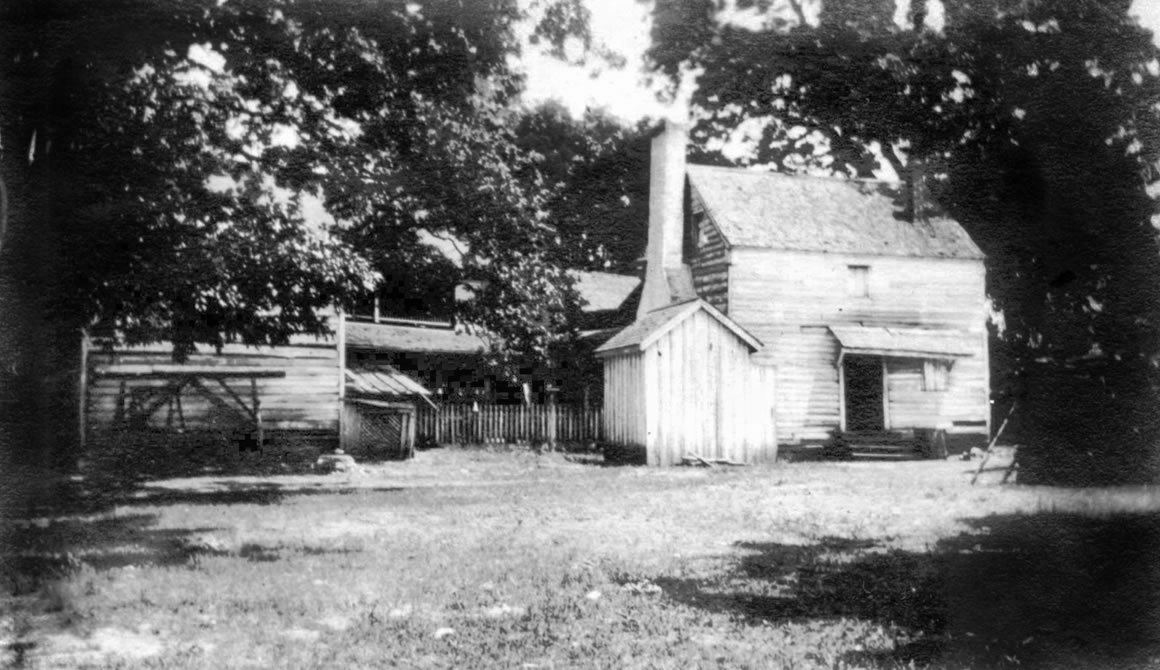
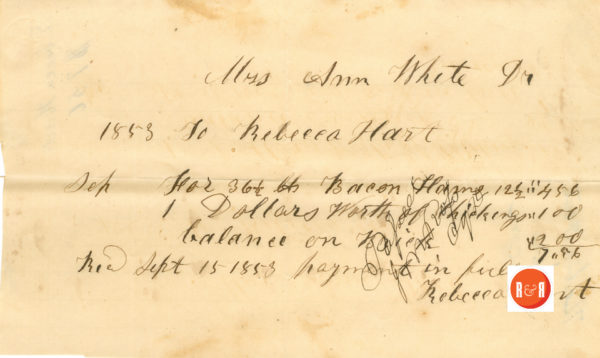
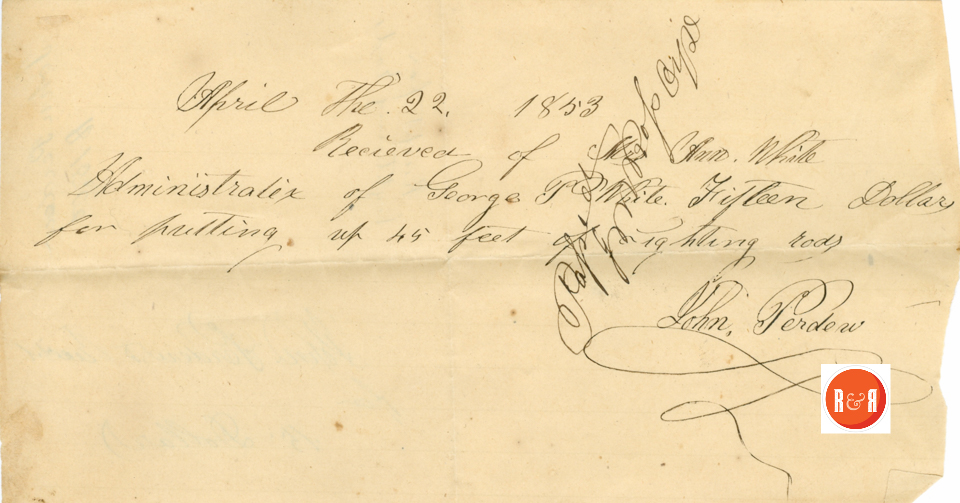
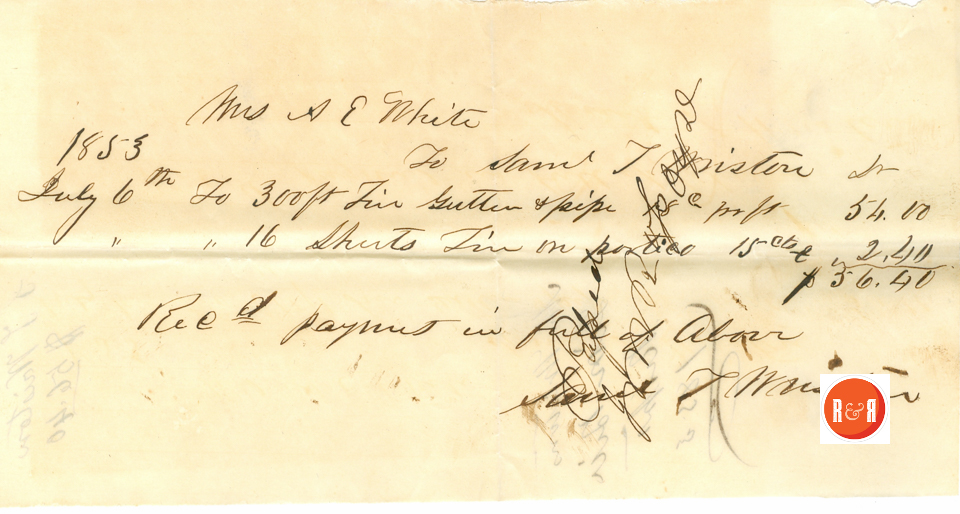
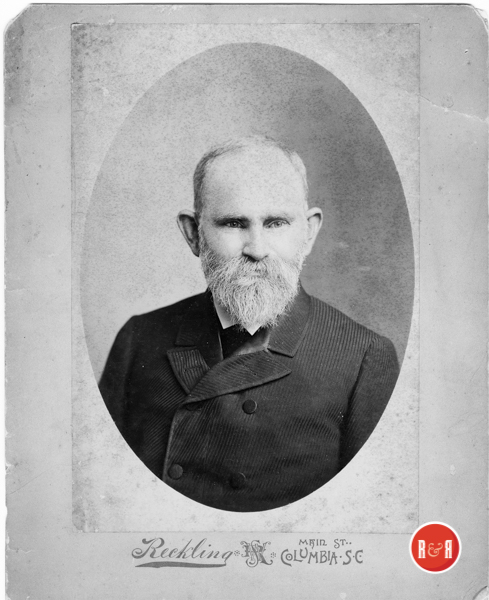
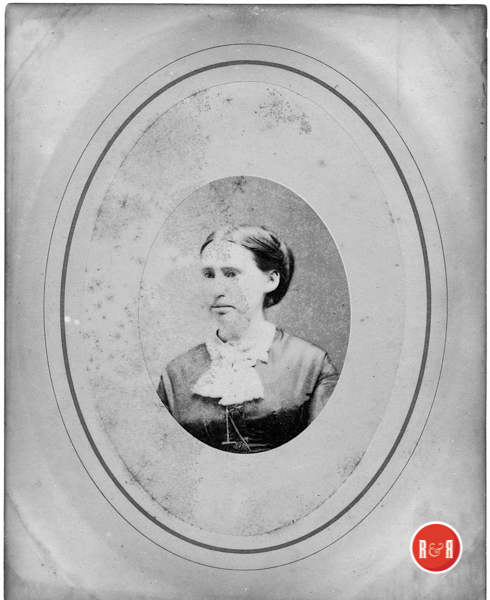
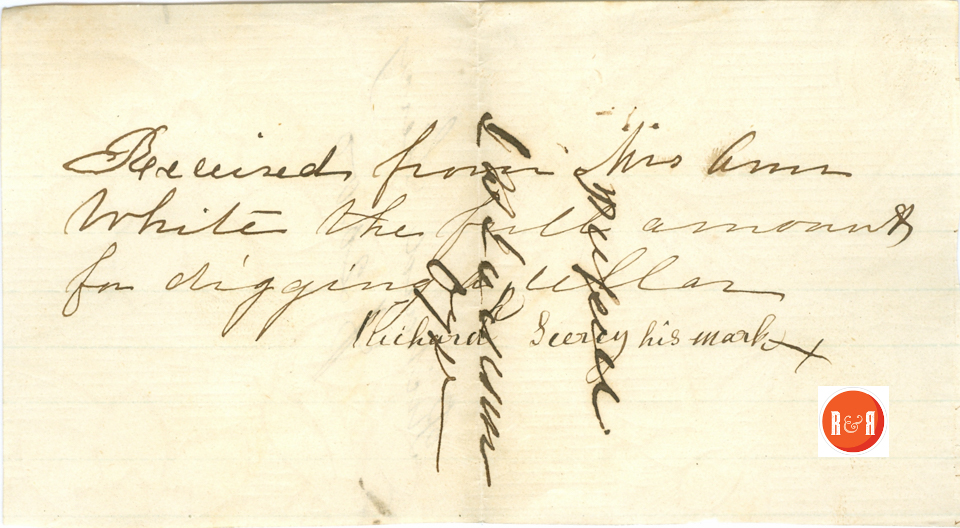
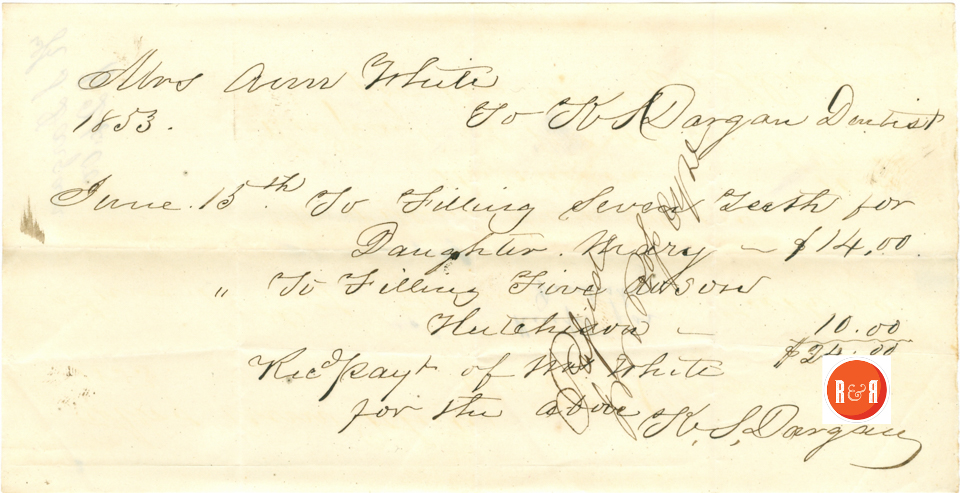
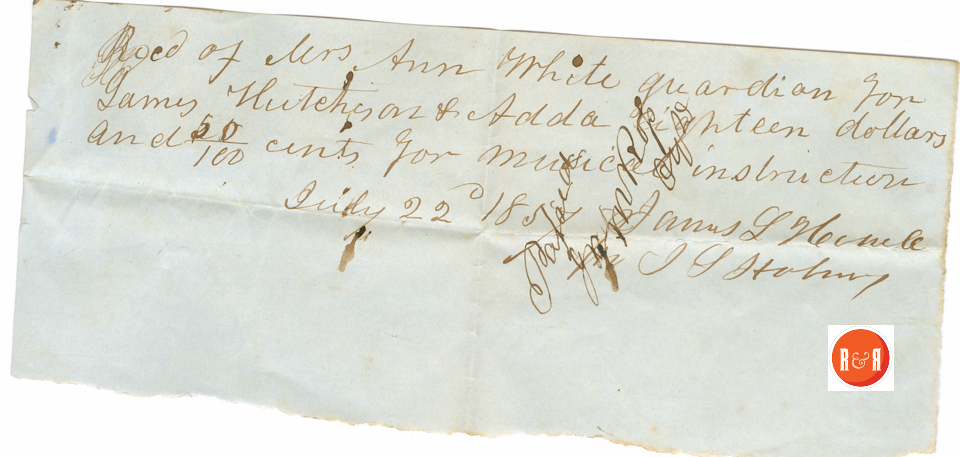
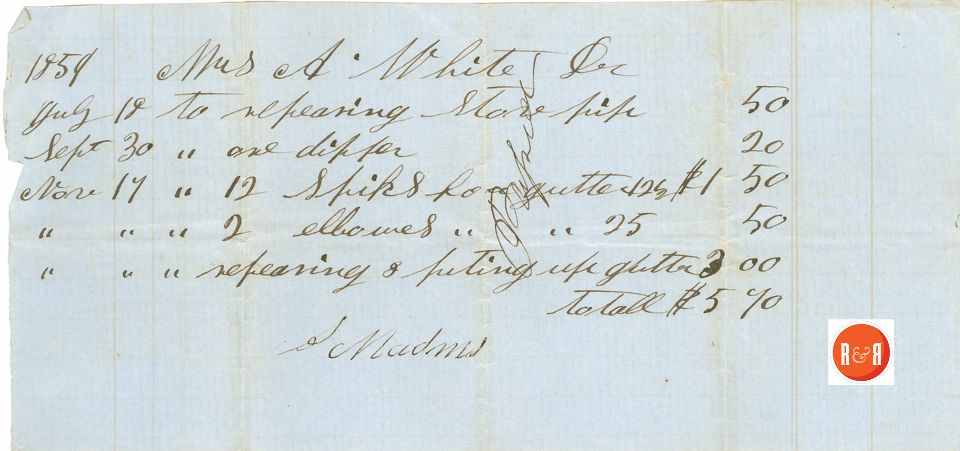
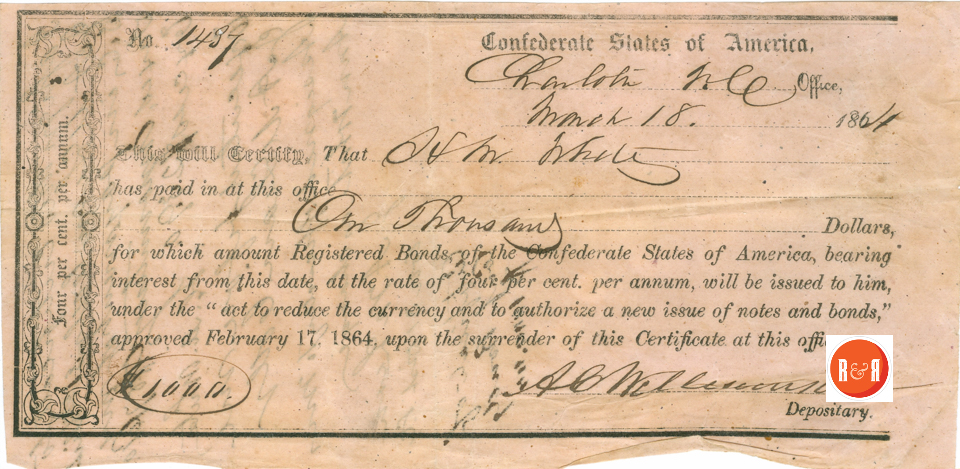
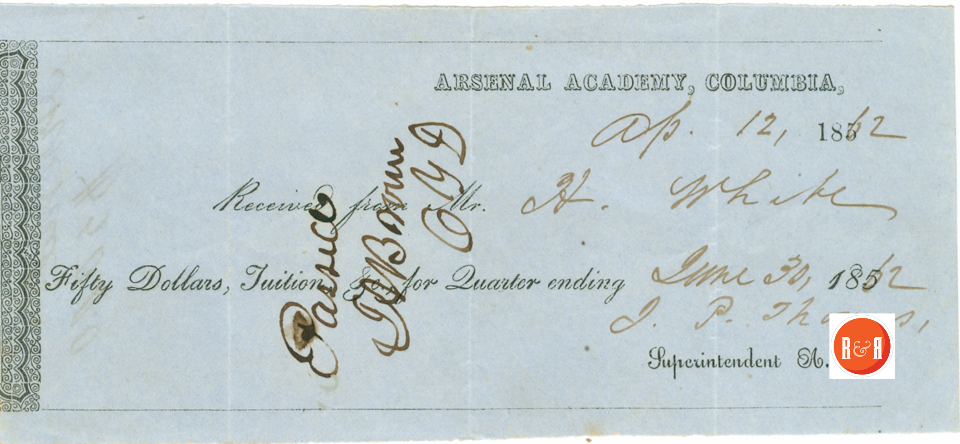
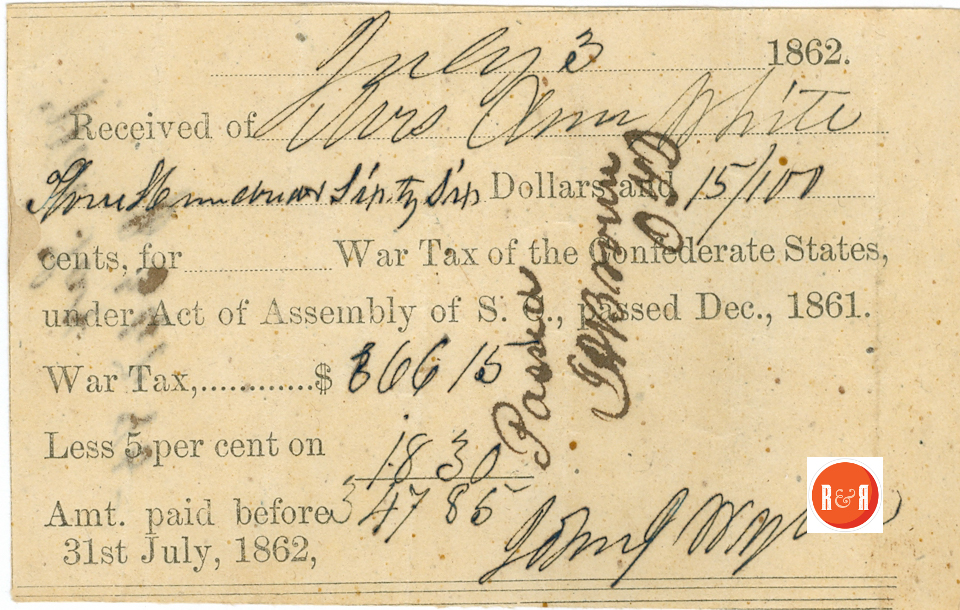
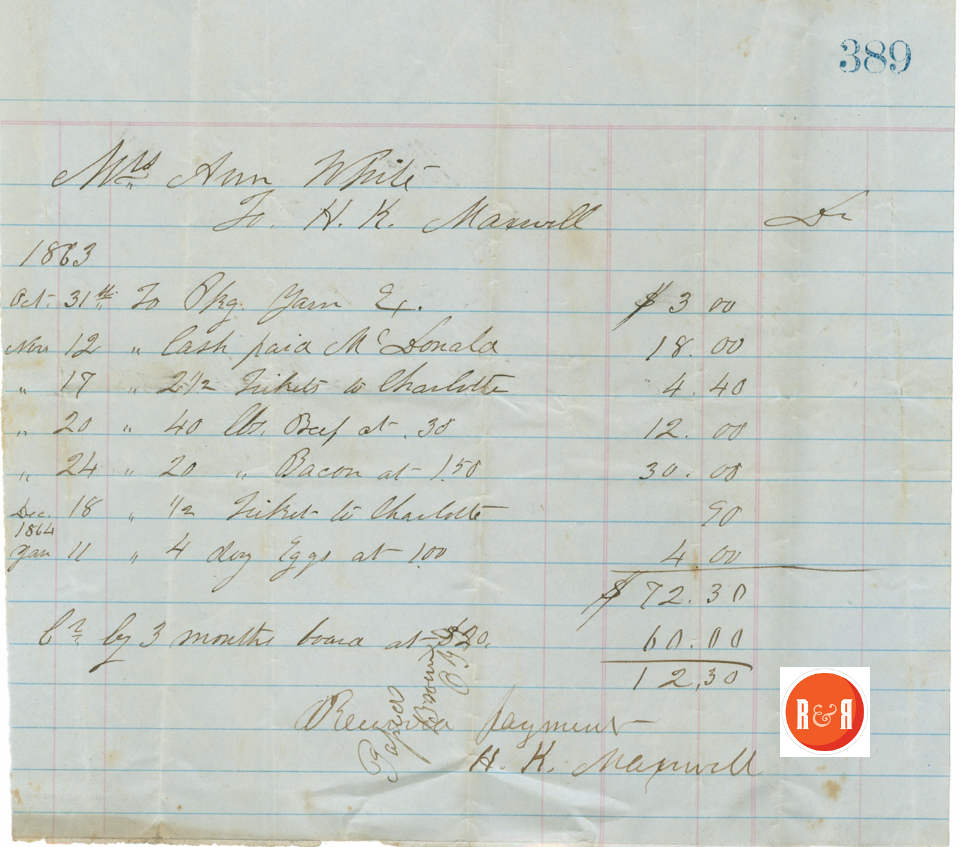
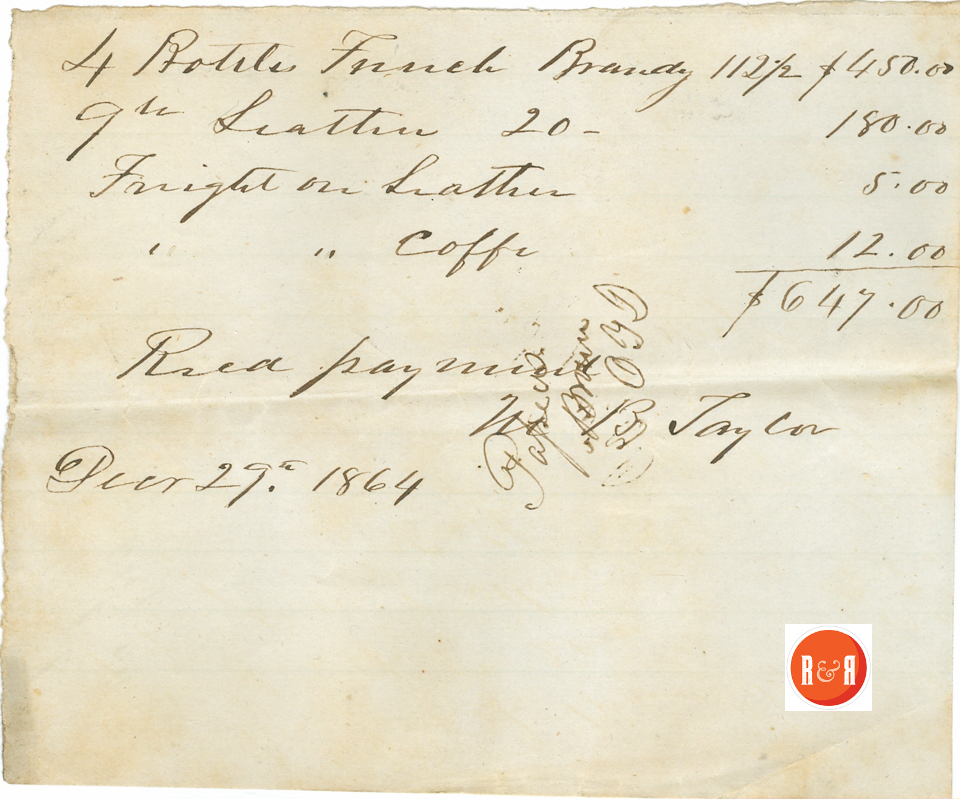
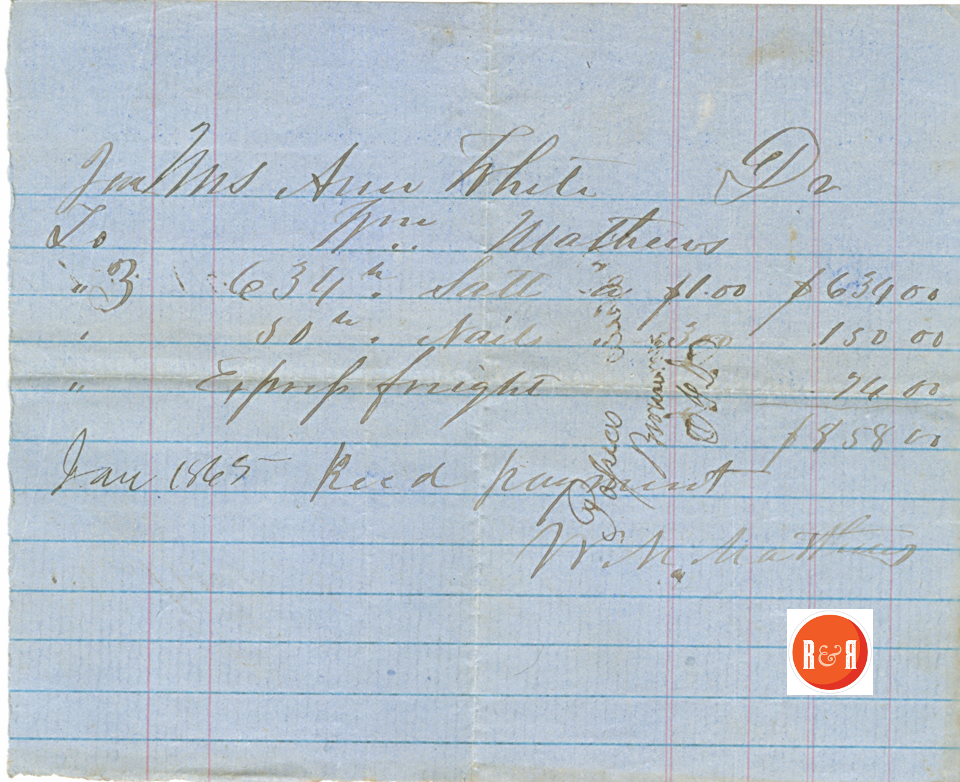
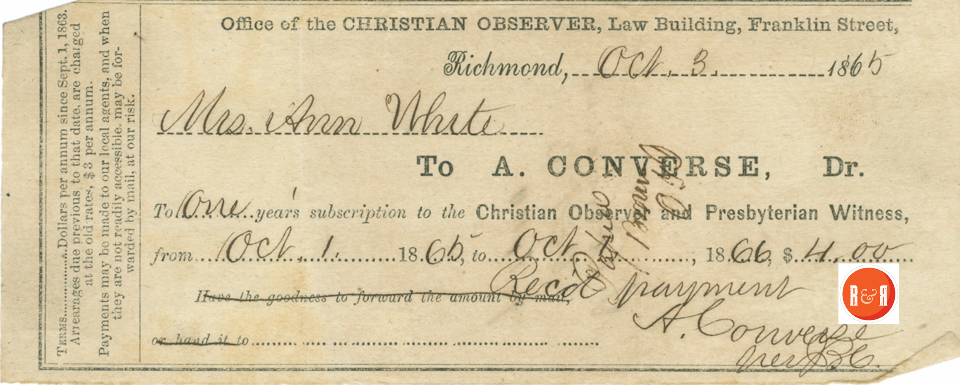
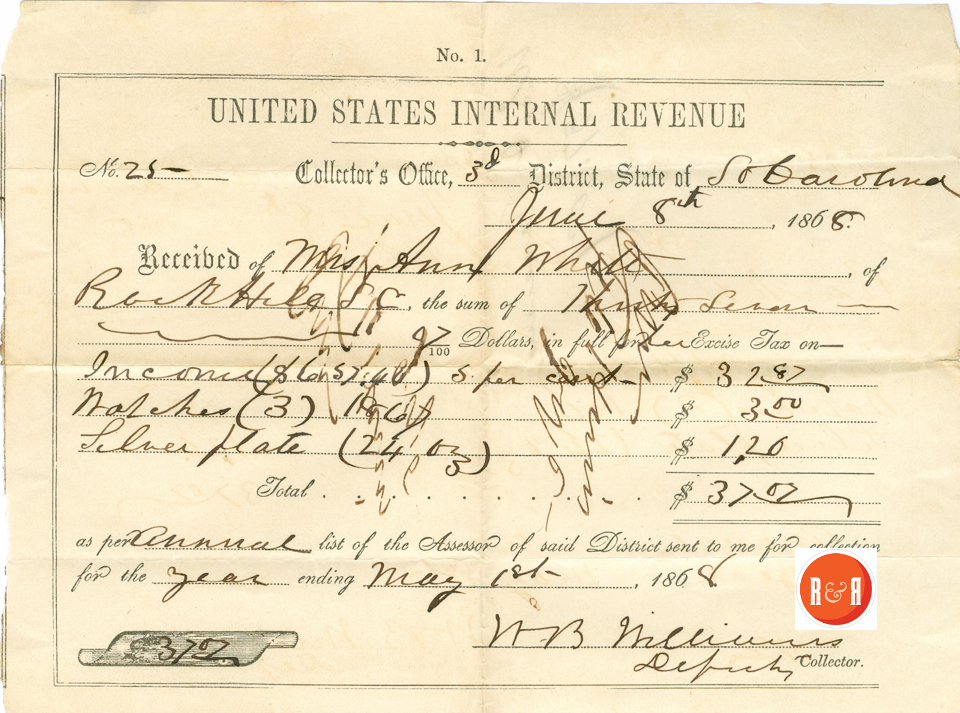
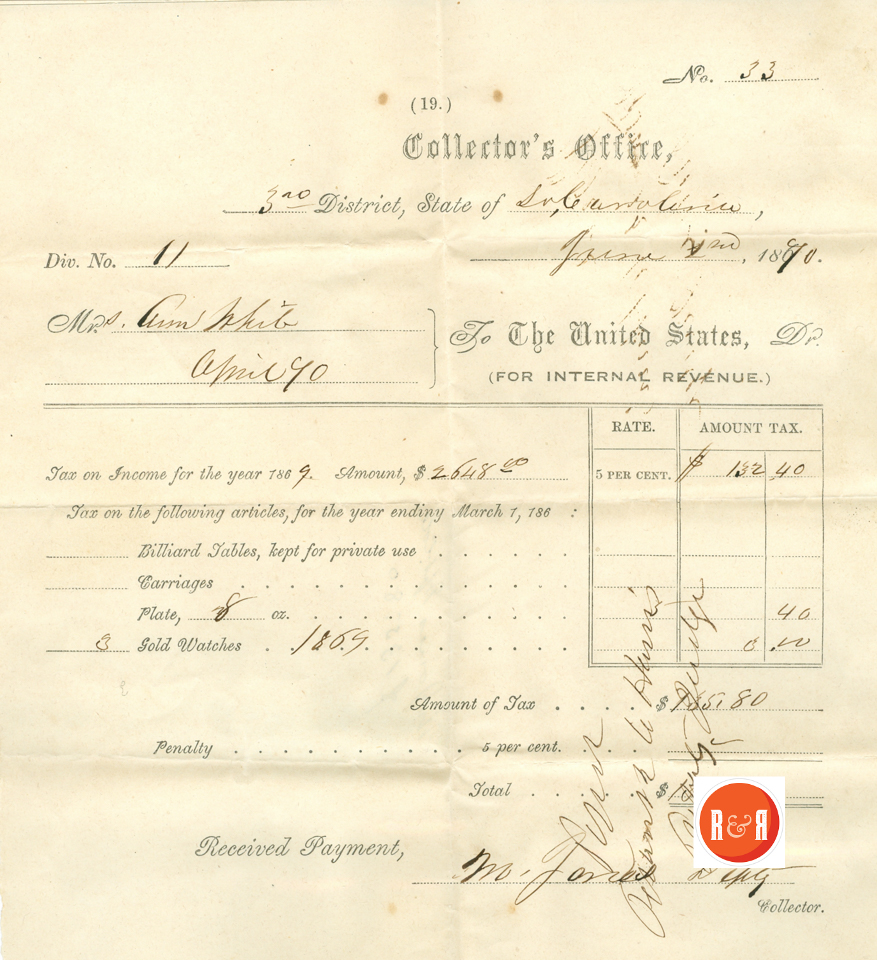
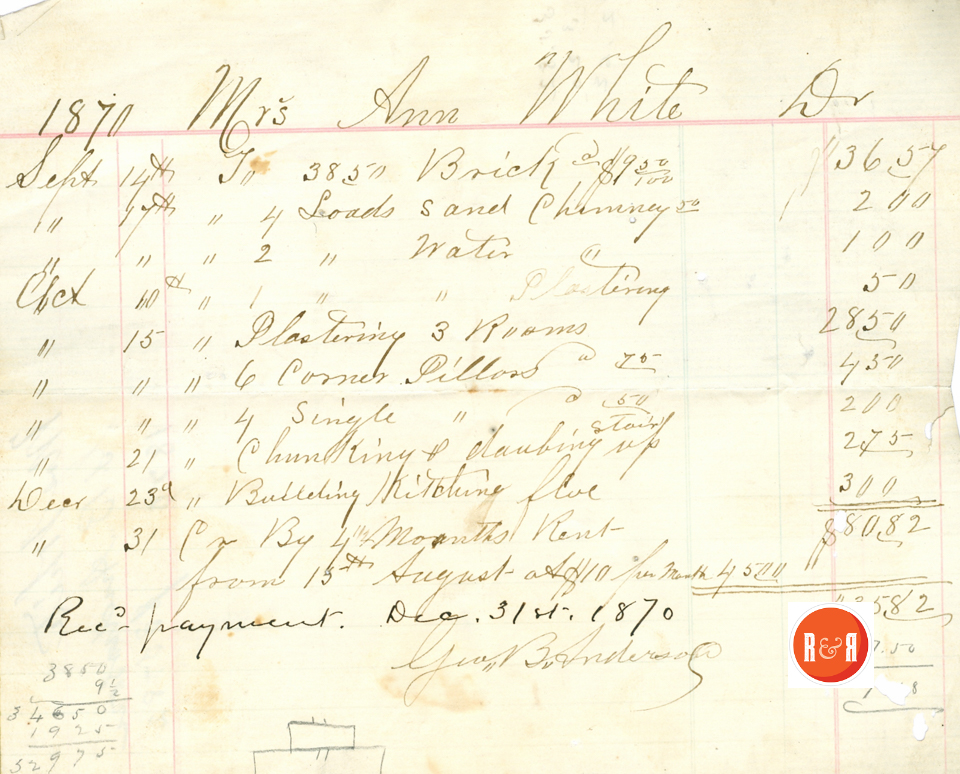
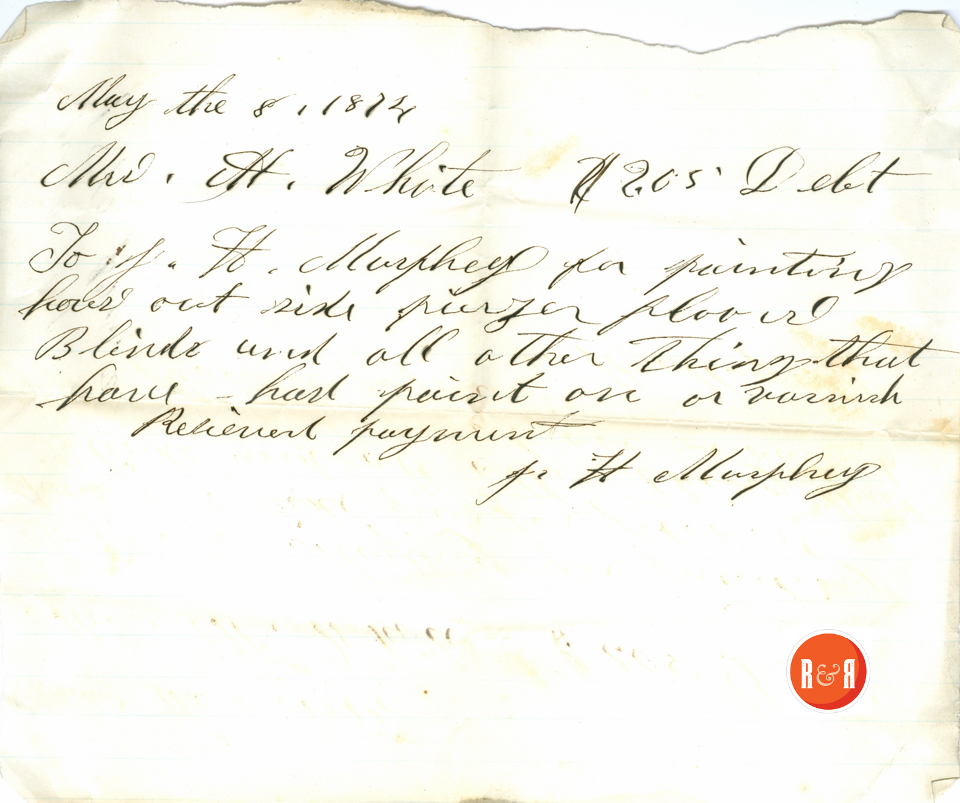
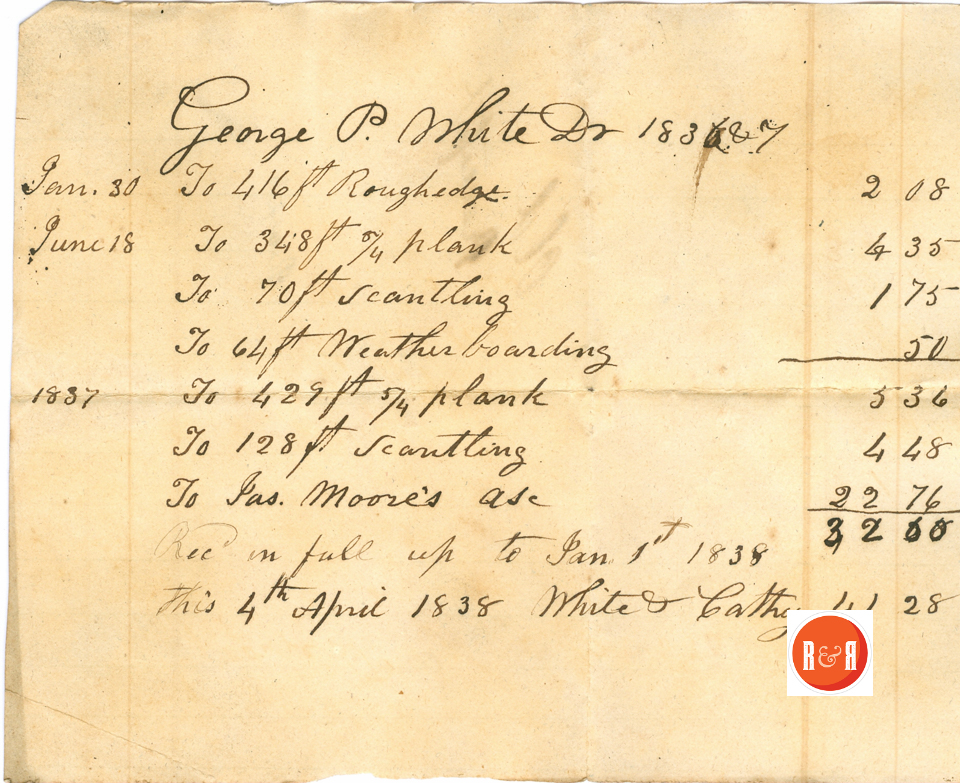
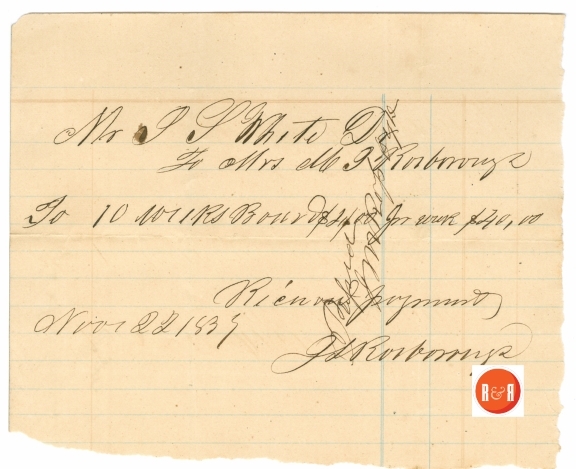
![E.H. Abell was sawing lumber for the White Home during much of the mid 19th century. [Courtesy of HRH – White Family Collection]](https://www.rootsandrecall.com/york-county-sc/files/2013/05/th_35daec7018489a4d3b823df8bdea5fee_136992627517417Compressed-2.jpg)
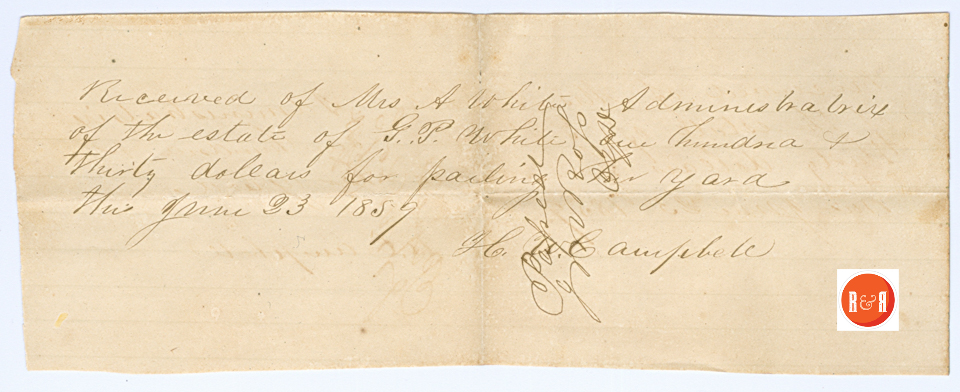
![Repairs to the White Home property in 1860. [Courtesy of HRH – White Family Collection]](https://www.rootsandrecall.com/york-county-sc/files/2013/05/th_35daec7018489a4d3b823df8bdea5fee_136992634817774Compressed-2.jpg)
![Bill for constuction of the smoke house at the White Home. [Courtesy of HRH – White Family Collection]](https://www.rootsandrecall.com/york-county-sc/files/2013/05/th_35daec7018489a4d3b823df8bdea5fee_13699264211742Compressed-2.jpg)
![Anne H. White’s photograph taken in New York City. [Courtesy of HRH – White Family Collection]](https://www.rootsandrecall.com/york-county-sc/files/2013/05/th_35daec7018489a4d3b823df8bdea5fee_1369924461Mrs.A.H.WhiteCompressed-2.jpg)
![The White Home in 1872. Mrs. Anne H. White on the first level, right hand side. [Courtesy of HRH – White Family Collection]](https://www.rootsandrecall.com/york-county-sc/files/2013/05/th_35daec7018489a4d3b823df8bdea5fee_1369924702WH1872TopAdelineLtJamesS.WhiteRtLowerMaryEliz.A.H.AnnH_.WhiteCompressed-2.jpg)
![Rear of the White Home – date unknown. [Courtesy of HRH – White Family Collection]](https://www.rootsandrecall.com/york-county-sc/files/2013/05/2-3b-J.S.-White-at-WH-YCL.jpg)
![Brick smoke house near the edge of what became Elizabeth Lane. [Courtesy of HRH – The White Family Collection]](https://www.rootsandrecall.com/york-county-sc/files/2013/05/th_35daec7018489a4d3b823df8bdea5fee_1369925173SmokeHouseCompressed-2.jpg)
![Hunting bag belonging to George P. White. Purchased in York, SC for .37$ [Courtesy of HRH – White Family Collection]](https://www.rootsandrecall.com/york-county-sc/files/2013/05/th_35daec7018489a4d3b823df8bdea5fee_1438011217G.P.WhitesBag-2.jpg)
![The White’s property in what became downtown Rock Hill, SC circa 1854 [Courtesy of HRH and the S.C. Dept. of Archives and History]](https://www.rootsandrecall.com/york-county-sc/files/2013/05/Roddey-Nov-15-1854.jpg)
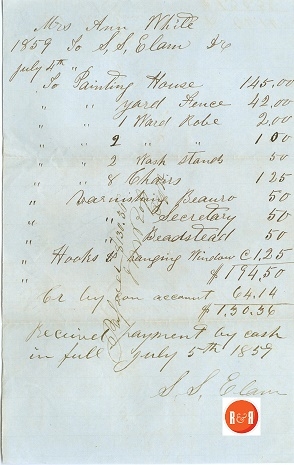
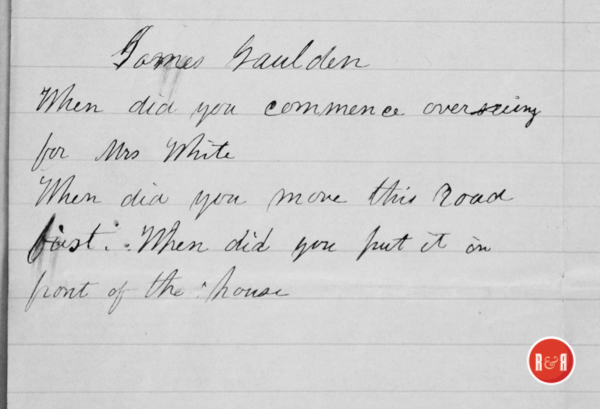

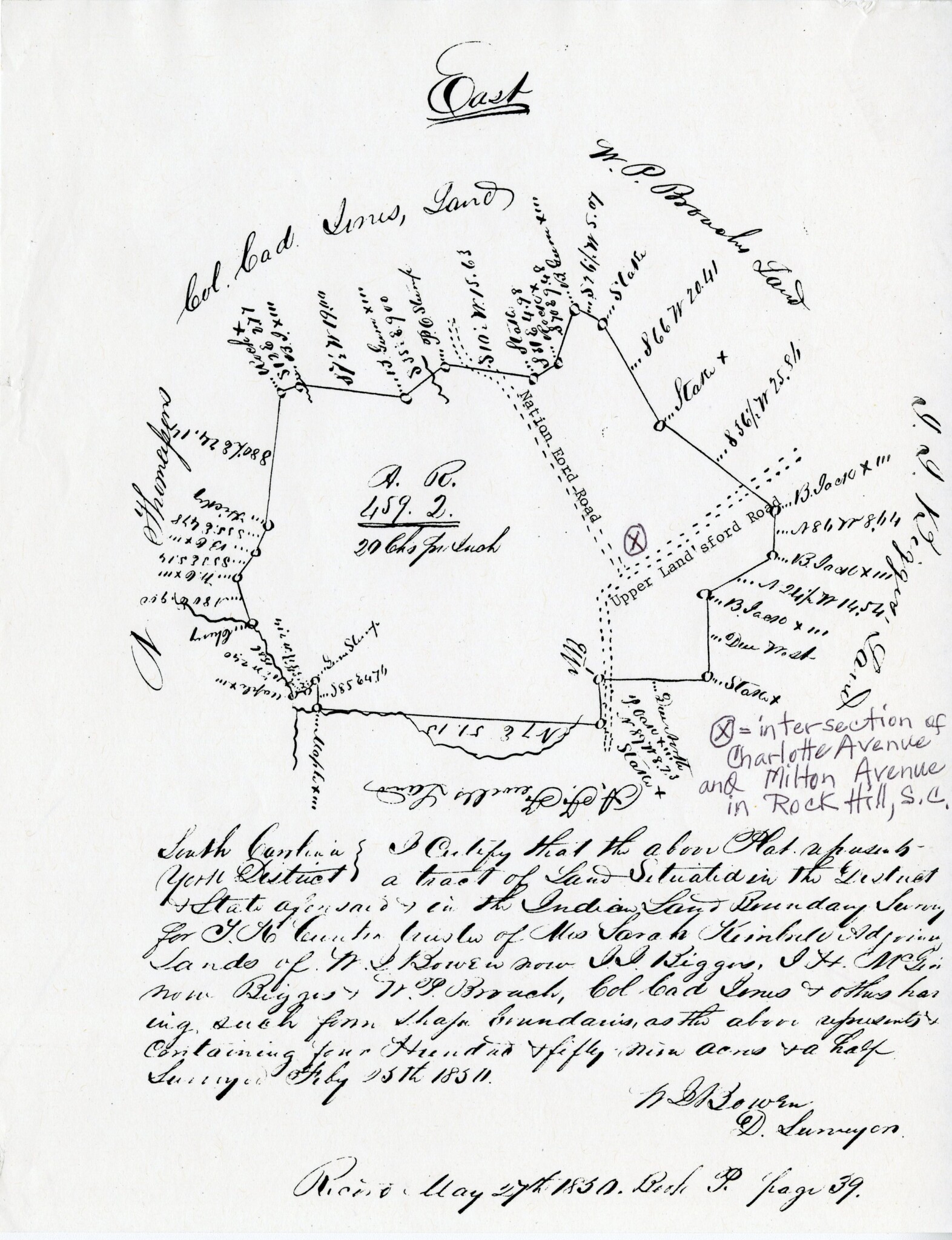
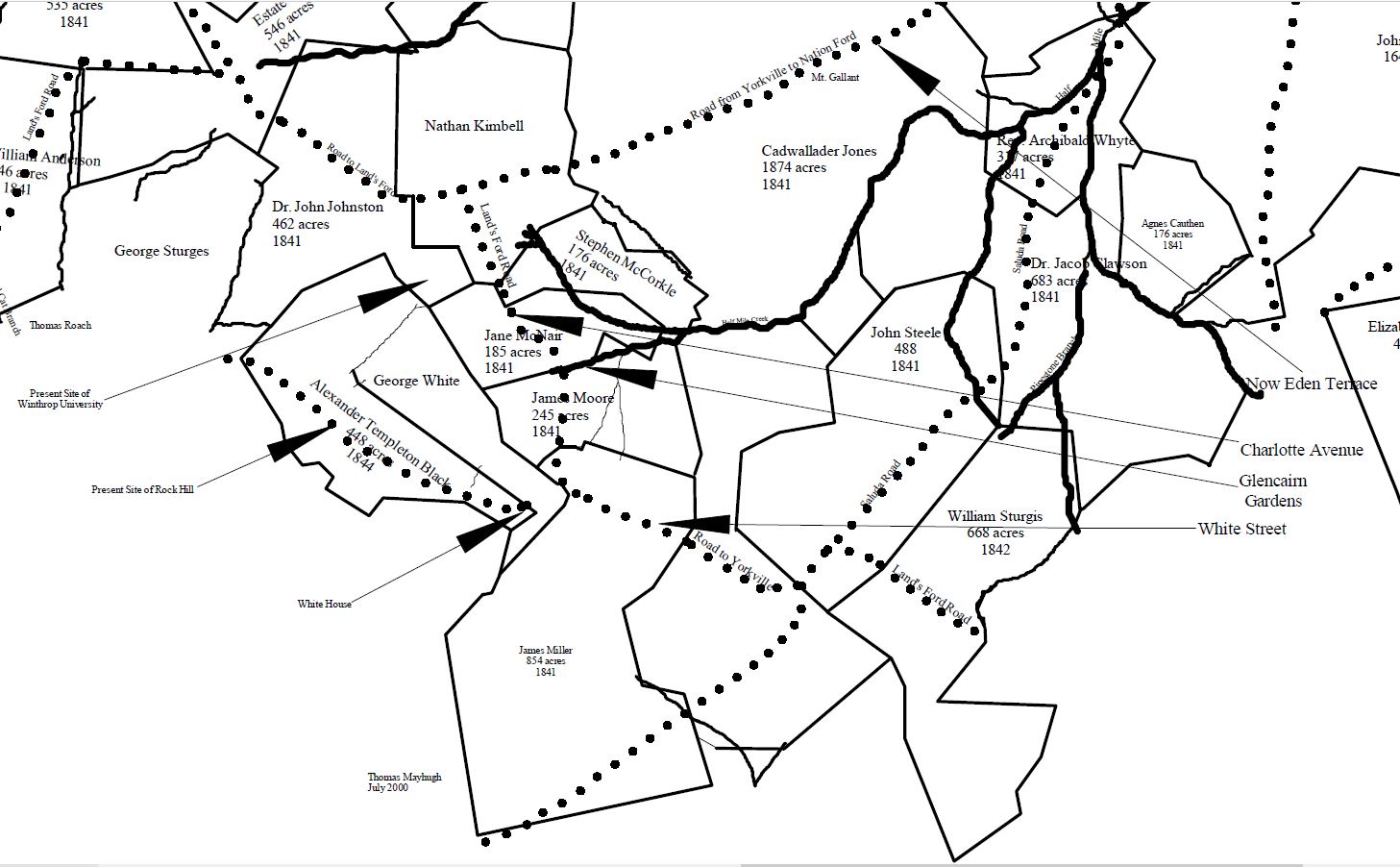

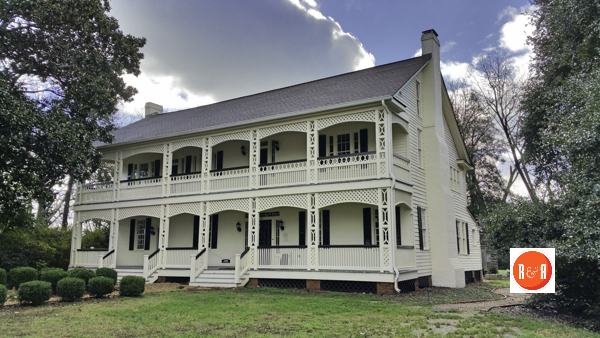

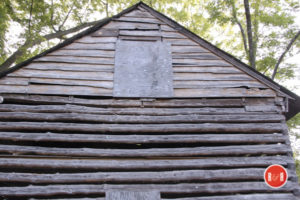
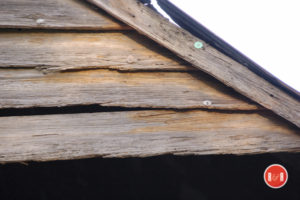

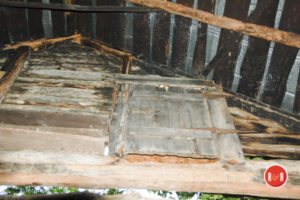


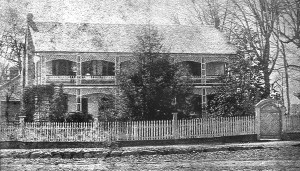
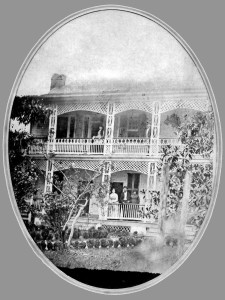
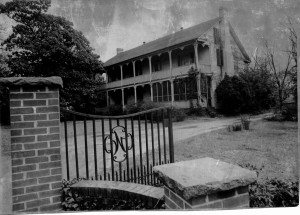
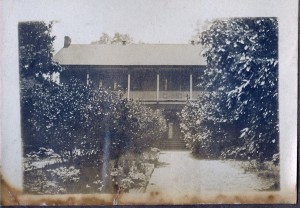
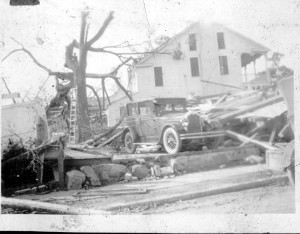
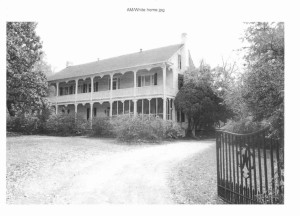


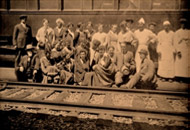
Share Your Comments & Feedback: